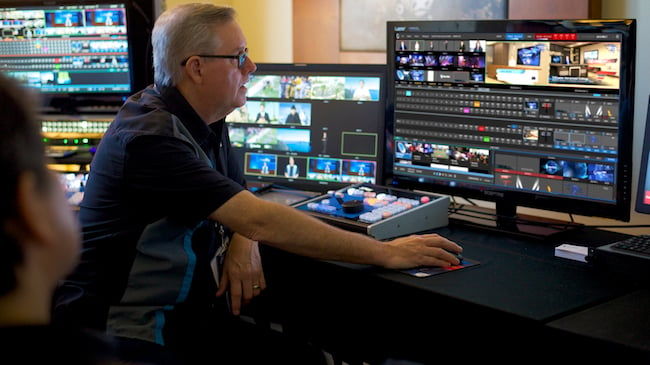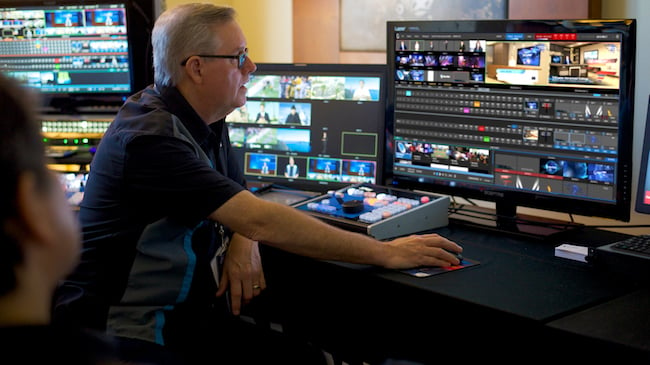
 IP production has the potential to be as disruptive as the smartphone
IP production has the potential to be as disruptive as the smartphone
The first iPhone was announced ten years ago and the world has been a different place ever since. This is not just because it was a radically new and different type of phone. The iPhone seemed like science fiction: something that shouldn’t have happened for years into the future.
Why did the iPhone make the world a different place? Because it put the internet in people’s pocket, and because of Apps.
Later versions of the iPhone were festooned with sensors. It knew where it was, whether it was up or down, what direction it was pointing, it had wireless network connectivity, and, of course, a great touchscreen that you could use with your fingertips. Apps meant it could become anything. It could be a juke box, a video player, a SatNav, or even a cardiac health monitor. It has disrupted multiple industries (think: Uber, for example) and virtualised even more. Why would you build an expensive hardware device when you can do it on an iPhone?
The iPhone turned the lights on so that we could see the future.
It’s happening again with electric cars. Until Tesla announced their Model S - a luxury sports saloon that happens to run on electricity - nobody wanted to buy an electric car. Now, Tesla can’t build them quickly enough.
What the iPhone and the Tesla have in common is that they did something that wasn’t supposed to be possible, and they nailed it completely. They not only did it, but they killed any doubt that it would and could be done. And they did this by making something so good that there was simply no room for doubt about the new technology.
History will show whether NewTek’s IP Series is the video industry’s iPhone or Tesla. We’re not making that claim here, but there are valid comparisons to be made.
For some time now, the video production industry has been working to create a standard for video over IP. If a standard IT infrastructure can be used to carry production-quality video signals, then not only does it make building a studio much cheaper, it makes the studio better too, because networks can do things that SDI (which is unidirectional and point-to-point) can’t. Interoperability is a fine thing to aim at but we’re still some years away from a flexible standard. So what you have at the moment is islands of connectivity, with little assurance that equipment from one manufacturer will work over IP with another.
Full interoperability is still estimated to be at least five years away. That’s a long time in this business. Meanwhile, NewTek, a company that has been working with computer video for decades, has designed a fully working video over IP technology that they’ve made available to all potential partners. NDI is open, free to use and fully documented. It allows video devices to interconnect using industry standard local area networks.
NDI is very easy to use, and immensely flexible. You can connect existing video equipment via adaptors or even by creating on-board drivers using NewTek’s NDI APIs.
NewTek’s new IP Series is a full-spec video production switcher and effects unit. It is modular, and is designed from the ground-up to exist on a network. Instead of the usual rows of SDI connections, there’s an Ethernet socket. The fully featured control surface connects via the network to the video processor, and if there’s any need for conventional SDI connectivity, there’s a network-attached module for that too. All cameras, displays and other contributing devices (graphics, titles, etc) are simply plugged into the network through a wall socket. All devices appear in a “source” menu, as if there were physically connected.
In an instant, NewTek’s IP Series eliminates the need for expensive and inflexible SDI cabling and routers. A studio designed from scratch with a fibre infrastructure may *never* need any additional wiring.
The IP Series is more than simply a tentative demonstration of a new technology. It’s a real product that you can buy today. It just works. And it’s at least a five year leap into the future.
To find out more about NewTek's IP Series click here.
Tags: Production IP Video


Comments